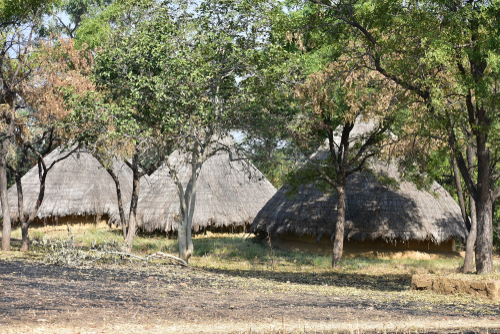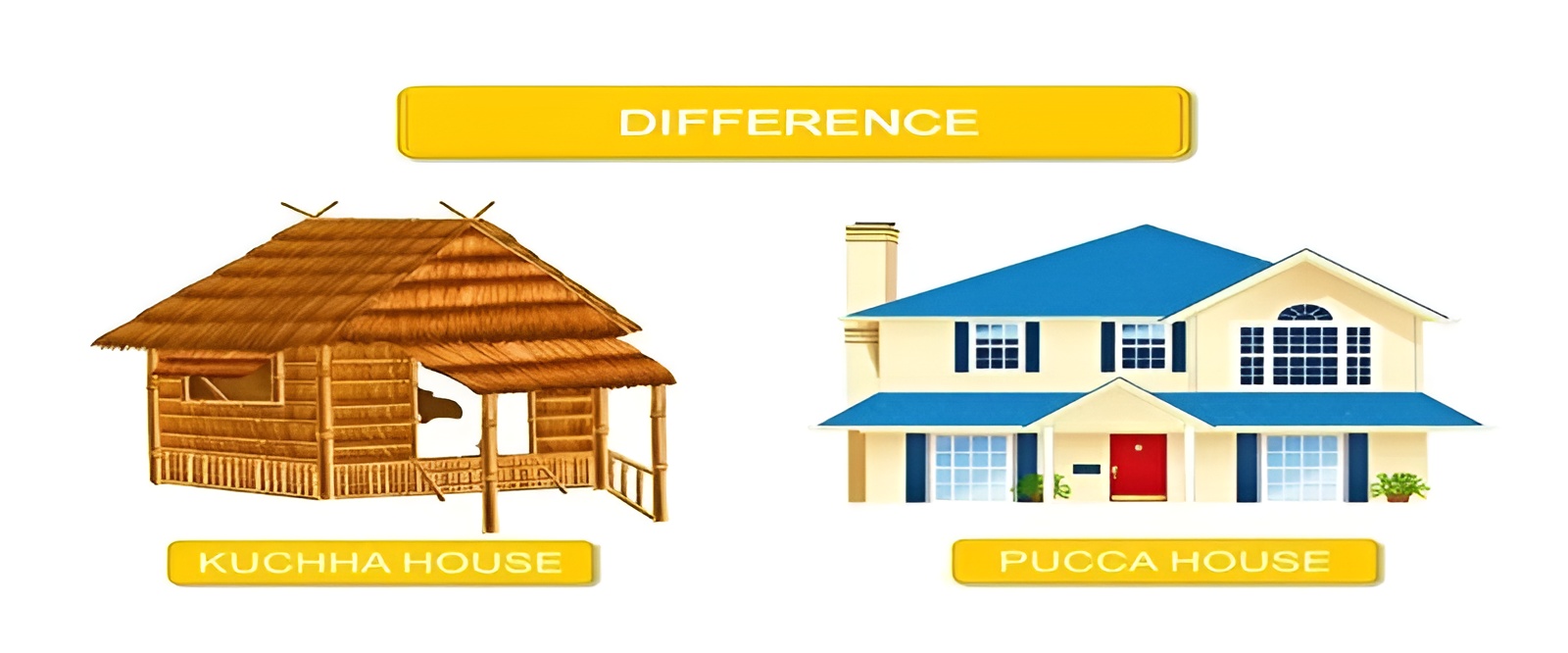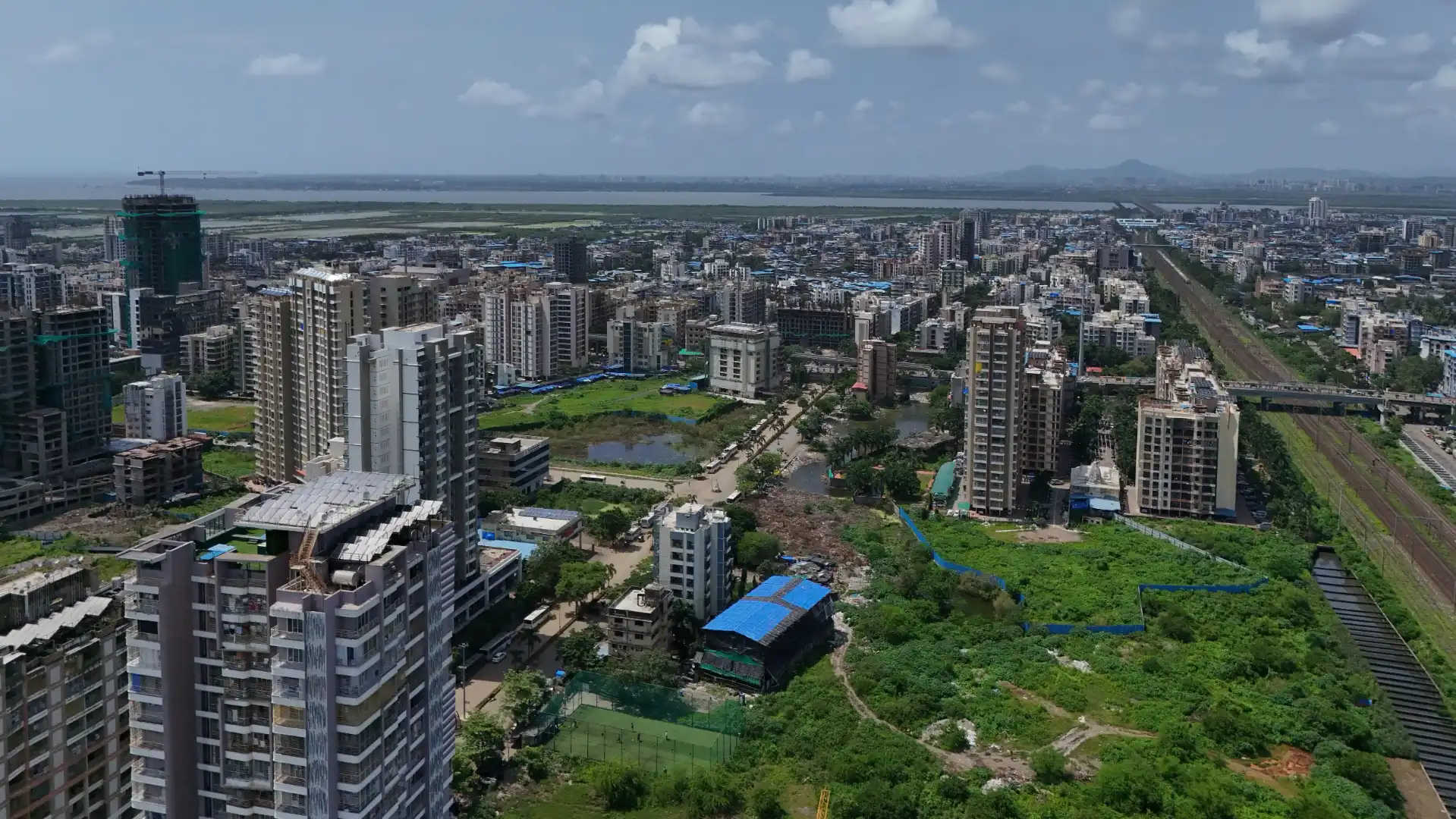Table of Content
- 1. Introduction to Kutcha and Pucca Houses
- 2. Understanding Kutcha Houses
- 3. Understanding Pucca Houses
- 4. Key Differences Between Kutcha House and Pucca House
- 5. Factors Influencing the Construction of Kutcha and Pucca Houses
- 6. The Transition from Kutcha to Pucca Houses
- 7. Government Schemes and Initiatives for Housing
- Conclusion
The type of house you live in reflects not only your economic status but also the culture and geographical conditions of your location. Two main types of houses often discussed in rural and urban areas of India are Kutcha and Pucca houses. These terms represent two distinct forms of housing in terms of structure, materials, and durability. This article delves deep into the difference between kutcha house and pucca house, analyzing the pros and cons, structural variations, and why they matter.
1. Introduction to Kutcha and Pucca Houses
Houses can be broadly categorized into two types: Kutcha houses and Pucca houses. The fundamental difference between kutcha house and pucca house lies in their construction materials and durability. While kutcha houses are temporary and made from natural materials, pucca houses are permanent structures made from durable materials like cement, concrete, and bricks.
2. Understanding Kutcha Houses
Kutcha houses are temporary structures made from materials like mud, straw, bamboo, and other locally available natural resources. They are commonly found in rural areas, especially where access to modern construction materials is limited. Kutcha houses, though often considered basic, serve as shelter to a large portion of the population in developing nations.
Characteristics of Kutcha Houses:
- Made from temporary materials such as mud, straw, and bamboo.
- Not very durable; they need frequent repairs.
- Often found in rural or underdeveloped regions.
- Less costly to construct.
- Have basic architectural designs.
Materials Used in Kutcha Houses:
- Mud: Primary material for the walls and flooring.
- Straw or Bamboo: Used for roofing and reinforcement.
- Wooden Planks: Sometimes used to provide structural support.
- Thatch and Grass: Typically used for roofing.



Advantages of Kutcha Houses:
- Low-cost construction: These houses are affordable for low-income families.
- Natural insulation: Mud and straw offer natural insulation against heat.
- Environmentally friendly: Built using locally sourced, eco-friendly materials.
Disadvantages of Kutcha Houses:
- Low durability: They are vulnerable to natural calamities such as heavy rain, storms, and fire.
- High maintenance: Kutcha houses need regular upkeep and repairs.
- Lack of amenities: These houses generally lack modern amenities like proper sanitation, electricity, and water.
3. Understanding Pucca Houses
Pucca houses, on the other hand, are permanent structures made from strong, durable materials like bricks, cement, and concrete. These houses are built to last for a long time and are typically found in urban areas and developed regions.
Characteristics of Pucca Houses:
- Built using durable materials like cement, bricks, steel, and concrete.
- Designed for long-term stability and durability.
- Feature modern amenities such as electricity, sanitation, and running water.
- Costlier to construct than kutcha houses.
Materials Used in Pucca Houses:
- Bricks: Used for the structure and walls.
- Cement and Concrete: Used for bonding and reinforcement.
- Steel: Often used to provide extra support and durability.
- Tiles or Slate: Used for the roofing to provide better protection.
Also Read: Brick Size and Type to Choose for Construction
Advantages of Pucca Houses:
- Long-lasting: Pucca houses are durable and can withstand natural calamities.
- Low maintenance: These houses require less frequent repairs and upkeep.
- Better amenities: Pucca houses typically come equipped with modern amenities like electricity, water supply, and sanitation.
- Improved safety: These houses offer greater protection against natural disasters like earthquakes, floods, and fires.
Disadvantages of Pucca Houses:
- Expensive to construct: Requires higher initial investment and labor.
- Longer construction time: Building a pucca house takes longer due to the complexity of materials and labor required.
4. Key Differences Between Kutcha House and Pucca House
Below is a detailed comparison of the difference between kutcha house and pucca house across various parameters:
|
Parameter |
Kutcha House |
Pucca House |
|
Durability |
Temporary, requires frequent repairs |
Permanent, long-lasting and requires minimal repairs |
|
Materials Used |
Natural materials like mud, straw, and bamboo |
Modern materials like cement, concrete, and bricks |
|
Cost of Construction |
Low-cost, affordable |
High-cost, requires significant investment |
|
Safety and Stability |
Less stable, vulnerable to natural disasters |
Stable and offers better protection against calamities |
|
Maintenance |
High, frequent repairs needed |
Low, minimal maintenance required |
|
Environmental Impact |
Eco-friendly, low carbon footprint |
Higher environmental impact due to use of cement and concrete |
|
Social Perception |
Considered a basic, temporary form of shelter |
Considered a permanent, modern form of shelter |
5. Factors Influencing the Construction of Kutcha and Pucca Houses
Several factors influence the type of house that a person constructs, whether it is a kutcha or a pucca house. These include:
- Economic Status: Lower-income families typically build kutcha houses due to the lower cost.
- Geographical Location: Rural areas usually have more kutcha houses due to the availability of natural resources.
- Cultural Preferences: In some regions, kutcha houses are preferred due to traditional or cultural beliefs.
- Government Support: The availability of government schemes and subsidies can help families transition from kutcha to pucca houses.
6. The Transition from Kutcha to Pucca Houses
Over time, many families living in kutcha houses aspire to build pucca houses as they offer better safety, comfort, and social status. Governments across the world, especially in developing nations, have launched various housing schemes to promote the transition from kutcha to pucca houses.
7. Government Schemes and Initiatives for Housing
In India, various government schemes such as the Pradhan Mantri Awas Yojana (PMAY) have been introduced to provide affordable housing to economically weaker sections, helping them transition from kutcha houses to pucca houses.
Conclusion
The difference between kutcha house and pucca house is significant, especially when it comes to durability, materials, and cost. While kutcha houses serve as affordable shelters, pucca houses offer long-term benefits such as safety, comfort, and better amenities. Understanding these differences can help individuals make informed decisions about their housing options based on their economic situation and location.
Also Read: How to Apply for PMAY Online 2024: A Complete Guide




_1767164061.webp)


Ans 1. Kutcha houses are temporary structures made of natural materials like mud, straw, and bamboo, whereas pucca houses are permanent structures built using durable materials like cement and bricks.
Ans 2. Yes, kutcha houses are eco-friendly because they are made from natural, locally sourced materials with a low carbon footprint.
Ans 3. Kutcha houses are generally less stable and more vulnerable to natural disasters compared to pucca houses, which offer better protection.
Ans 4. Pucca houses require modern construction materials like cement, concrete, and steel, as well as skilled labor, which makes them more expensive to build.
Ans 5. Government housing schemes like the Pradhan Mantri Awas Yojana (PMAY) provide financial support and subsidies to help low-income families transition from kutcha to pucca houses.